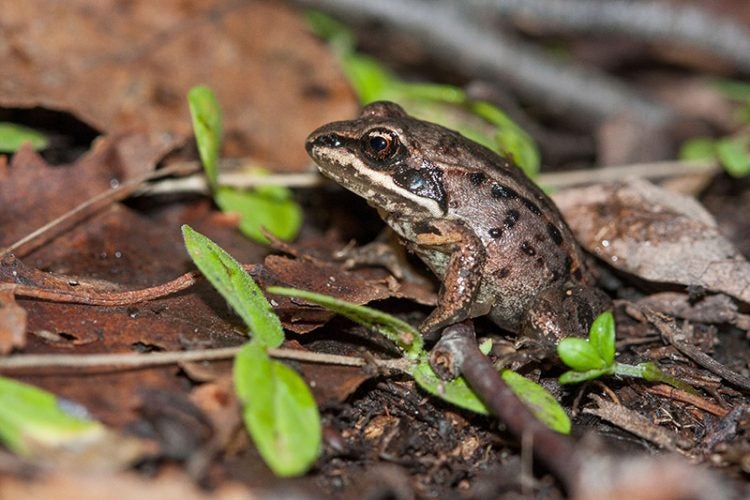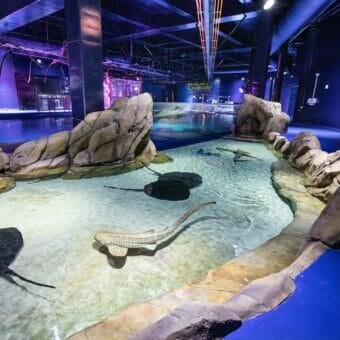-
Size
1.5 to 3 inches (4-8 cm) -
Diet
Beetles, spiders, moths, slugs and caterpillars -
Range
United States and Canada -
Habitat
Tundras, meadows, forests and wetlands
Physical Characteristics
- A small brown frog whose primary shade ranges from dark red-brown to pale tan across the back and limbs. A dark stripe starts at the nose and sweeps back along the face, widening into stark panels behind the eyes. The upper lip is bordered in white.
- The underside of this species is pale white, tending towards yellow under the hind legs.
- Sizes range from about 1.5 to 3 inches (4-8 cm). Females are larger than males.
Diet / Feeding
- Diet consists of beetles, spiders, moths, slugs and caterpillars, as well as other amphibian eggs and occasionally plant matter.
Range / Habitat
- Occurs from north Georgia and Alabama, up through the northeastern United States, throughout Canada and into Alaska.
- The wood frog is found in a wide variety of habitats, including tundras, meadows, forests and wetlands.
- Found farther north than any other amphibian or reptile in North America.
Reproduction & Growth
- Wood frogs breed seasonally in the spring, as soon as the ice recedes from ponds and pools, usually March-May.
- Breeding pools must be free of predatory fish to support eggs and tadpoles.
- Some wood frogs return to the same body of water to breed every year.
- A single female wood frog can lay 1000-3000 eggs each year.
- Eggs hatch after 9-30 days, with eggs laid in colder temperatures taking longer to hatch. Tadpoles then metamorphose into frogs at 2 months.
Conservation Status
- “Least Concern” on the IUCN Red List.
Additional Information
- Wood frogs exhibit a cryogenic freezing strategy to survive the winter. As much as 45% of the frog’s body will freeze, ice forms in its tissues and its heart and respiration stop. Specialized proteins and glucose prevent this freezing process from causing cell death and as the weather warms, the frog literally thaws out and returns to activity.
- Adult wood frogs are generally solitary outside of the breeding season.
- The adults are diurnal (active during the day).
- Predators that threaten adult wood frogs include snakes, wading birds, raccoons and other small mammals. Tadpoles are preyed upon by large insects, newts and fish.
Sources
- iucnredlist.org
- http://animaldiversity.org







